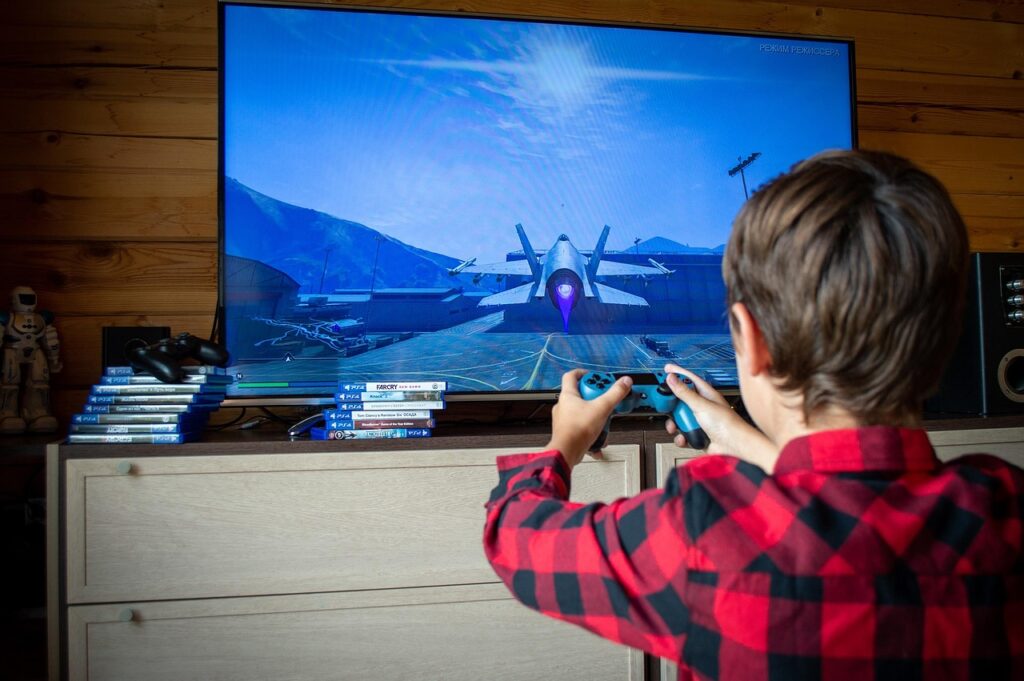Gaming is a realm full of inventiveness, imagination, and—surprisingly—a profound respect for imperfection. There is a strange allure in the janky, the flawed, and the little off-kilter that captivates our hearts and minds at a time when hyper-realism and crystal-clear visuals are sometimes hailed as the height of gaming success. This is particularly true of video game mirrors, an apparently inconspicuous element that may significantly impact our immersion in these virtual worlds whether rendered interactive or rendered somewhat hazy.
Mirror and Us
Consider the passionate disputes over how immersive mirrors are in games like “Cyberpunk 2077” as contrasted to the more clinical surroundings of “Mirror’s Edge.” ‘Cyberpunk 2077’ has gained accolades from both players and reviewers for its depth and sophistication, with many attributing its immersive experience to the ethnic variety present in its milieu. In ‘Mirror’s Edge,’ the visual is relatively simplistic despite the existence of an open environment, in sharp contrast to its depth. Similarities like these highlight how the slightest features, like mirrors, can have a major influence on the feel and immersion of a game, an interest shared by the greater gaming community.
The attractiveness of the faulty mirror in video games speaks a lot about how we as humans interact to mirrors in general. Mirrors are both physical and metaphorical representations of reflection, and when they are displayed in games with defects or constraints, it somehow gives the virtual world a more genuine and accessible sensation. We are pulled in by its faults, which give the whimsical a sensation of reality. A considerable section of the gaming community finds beauty in the defects, however this is not to indicate that all gamers deliberately search out or prefer janky mirrors over high-fidelity renderings.
This penchant for jankiness is not limited to gaming; it is also present in interactive technology, especially with the introduction of Augmented Reality (AR) mirrors. AR mirrors dissolve the boundaries between the digital and the real, providing a smooth and magical fusion of the two, whereas gaming mirrors provide a fixed, frequently programmed interaction inside a digital environment. The application of AR mirrors in fields like fashion, cosmetics, and medicine shows how adaptable they are and how amazing their potential is for producing immersive, interactive experiences that captivate consumers in new and interesting ways.

AR mirrors are only one of the many tools used in the fashion and beauty industry to draw consumers’ attention while offering them unique, unique experiences. Such mirrors allow users to virtually try on garments or cosmetics, superimpose digital pictures onto their reflection, or even virtually move to another location. But those old, non-interactive mirrors just can’t give that level of engagement and immersion, proving once more the potential for technology to better our everyday lives.
AR mirrors have great educational potential, as well. Such mirrors could offer users a creative and compelling way to get and understand information on health by superimposing augmented reality over complex medical conditions or procedures. In the hands of technology, even the simplest of products—like mirrors—can be turned into immersive teaching tools and can reach a variety of audiences.
Applying AR mirrors beyond gaming
The shift from janky mirrors in video games to the cutting-edge technology of AR mirrors demonstrates a tremendous increase in immersion and engagement. While faulty mirrors in games remind us of the beauty in flaws and the realism they may provide to virtual worlds, AR mirrors push the boundaries of what is possible by combining the digital and the real in ways that were previously only seen in science fiction. But the ultimate goal of both is to draw us further into the experience, whether we are in the center of a huge cyberpunk metropolis or standing in front of a mystical mirror that has the ability to change how we see the world and ourselves.
Let’s investigate the intriguing world of augmented reality mirrors, where creativity and technology come together to provide immersive experiences that are unparalleled. These technological marvels push our imaginations and take us to a future when the wall mirror does more than just reflect; it also interacts, educates, and transforms.
Suppose you go into a dressing room and an AR mirror replaces the traditional mirror. With just one action, you may try on clothes and accessories without ever changing your outfit. This isn’t a scenario from a science fiction novel, thanks to the inventive use of AR mirrors; for certain designer enterprises today, it’s the truth. Businesses are starting to employ this technology to provide customers a more engaged, individualized, and pleasurable purchasing experience. The breathtaking combination of the virtual and physical worlds captures the imagination and creates a memorable shopping experience that will surely make customers want to come back for more.

But the potential of AR mirrors goes beyond fashion. The healthcare industry is also looking at how these interactive mirrors could be able to engage and educate people in a whole different manner. Consider a mirror that shows both your image and interactive, lifelike anatomical depictions. It’s not just about novelty; this is a breakthrough way of perceiving and understanding complex medical conditions and treatments. For individuals and healthcare professionals, such an experience demystifies medical jargon, making health education more accessible and engaging than it was before.
The interactive features of AR mirrors are also being used by the gaming and entertainment sectors to create immersive experiences that blur the boundaries between the virtual and physical worlds. For example, these mirrors might make a typical hospital visit interesting and lessen young children’s dread of medical environments. Through gamified learning and therapy sessions, AR mirrors provide a unique combination of enjoyment and use, proving that technology can have a heart.
Beyond their immediate use, AR mirrors are significant for several reasons. They are a goldmine for data harvesting as they include details on user activities, preferences, and behaviors. Businesses may utilize this invaluable information to further personalize their products and services. AR mirror encounters may also provide user-generated content that can be utilized as eye-catching, authentic marketing materials. Compared to conventional advertising, social media sharing allows businesses to reach a larger audience in a more genuine and organic manner.
As we conclude this investigation on AR mirrors and how they affect immersion, it is evident that a new age is upon us. AR mirrors are a shining example of innovation as the boundaries between the digital and real worlds continue to blur, providing a window into a future in which technology improves our everyday lives in ways we haven’t yet fully anticipated. AR mirrors are transforming how we engage with our surroundings, whether it’s putting on a new look without changing clothing, learning about health in an entertaining way, or just enjoying a game. And who knows what additional miracles could be waiting for us outside the looking glass as we keep innovating and dreaming?
Related posts:
Mirror, mirror on the wall: The magic of Interactive AR mirrors
Dragon’s Dogma 2 review
Whats with the Janky plastic crap behind the rear view mirror?



